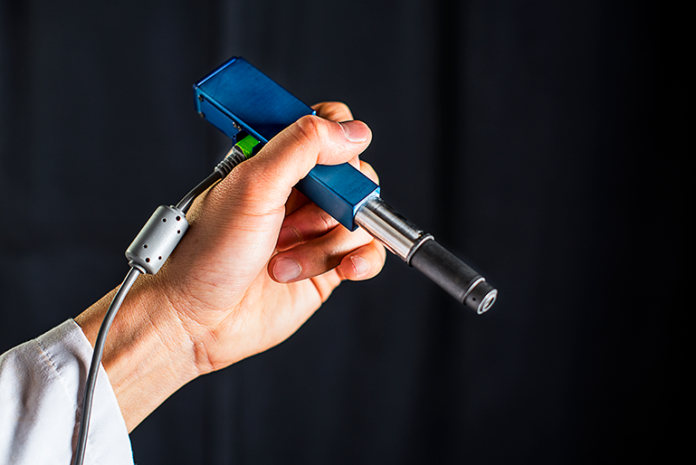

The real-time microscope images (left) illuminate similar details in mouse tissues as the images (right) produced during an expensive, multi-day process at a clinical pathology lab.
Biopsies and tumor removals typically require sending intra-operative tissue samples to the pathology lab for evaluation under a microscope. This takes time and is often detrimental to the patients, resulting in the removal of healthy tissues, longer time under anesthesia, and other concerns. Researchers at University of Washington, Memorial Sloan Kettering Cancer Center, Stanford University, and the Barrow Neurological Institute have been working on a hand-held microscope that would be able to let surgeons assess tissues right inside the OR.
The device relies on dual-axis confocal microscopy to peer up to a half millimeter under the surface without taking a slice of the tissue. It does this process rapidly using mirrors that sweep a light beam across the area of the tissue being analyzed, capturing what it’s seeing to a nearby computer that further analyzes the data. The researchers believe they can get it to work fast enough to avoid smudging during handheld operation, a necessity if the microscope is to be used during actual surgeries.
From the study abstract in Biomedical Optics Express:
In this study, a miniature line-scanned (LS) dual-axis confocal (DAC) microscope, with a 12-mm diameter distal tip, has been developed for clinical point-of-care pathology. The dual-axis architecture has demonstrated an advantage over the conventional single-axis confocal configuration for reducing background noise from out-of-focus and multiply scattered light. The use of line scanning enables fast frame rates (16 frames/sec is demonstrated here, but faster rates are possible), which mitigates motion artifacts of a hand-held device during clinical use. We have developed a method to actively align the illumination and collection beams in a DAC microscope through the use of a pair of rotatable alignment mirrors. Incorporation of a custom objective lens, with a small form factor for in vivo clinical use, enables our device to achieve an optical-sectioning thickness and lateral resolution of 2.0 and 1.1 microns respectively. Validation measurements with reflective targets, as well as in vivo and ex vivo images of tissues, demonstrate the clinical potential of this high-speed optical-sectioning microscopy device.
Here’s video captured by the microscope of a mouse ear at depths from .075 mm to .125mm:
Study in Biomedical Optics Express: Miniature in vivo MEMS-based line-scanned dual-axis confocal microscope for point-of-care pathology…
Source: University of Washington…
The post Powerful Handheld Microscope to Spot Cancer Cells During Surgery appeared first on Medgadget
